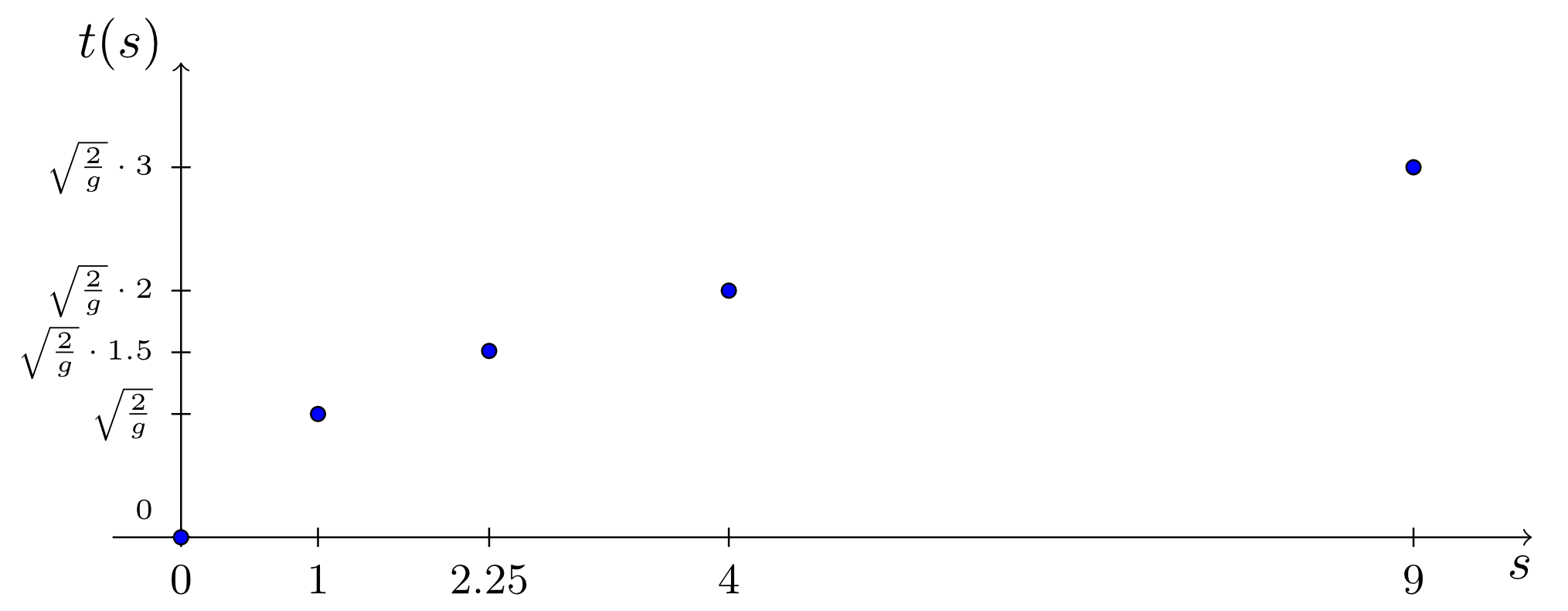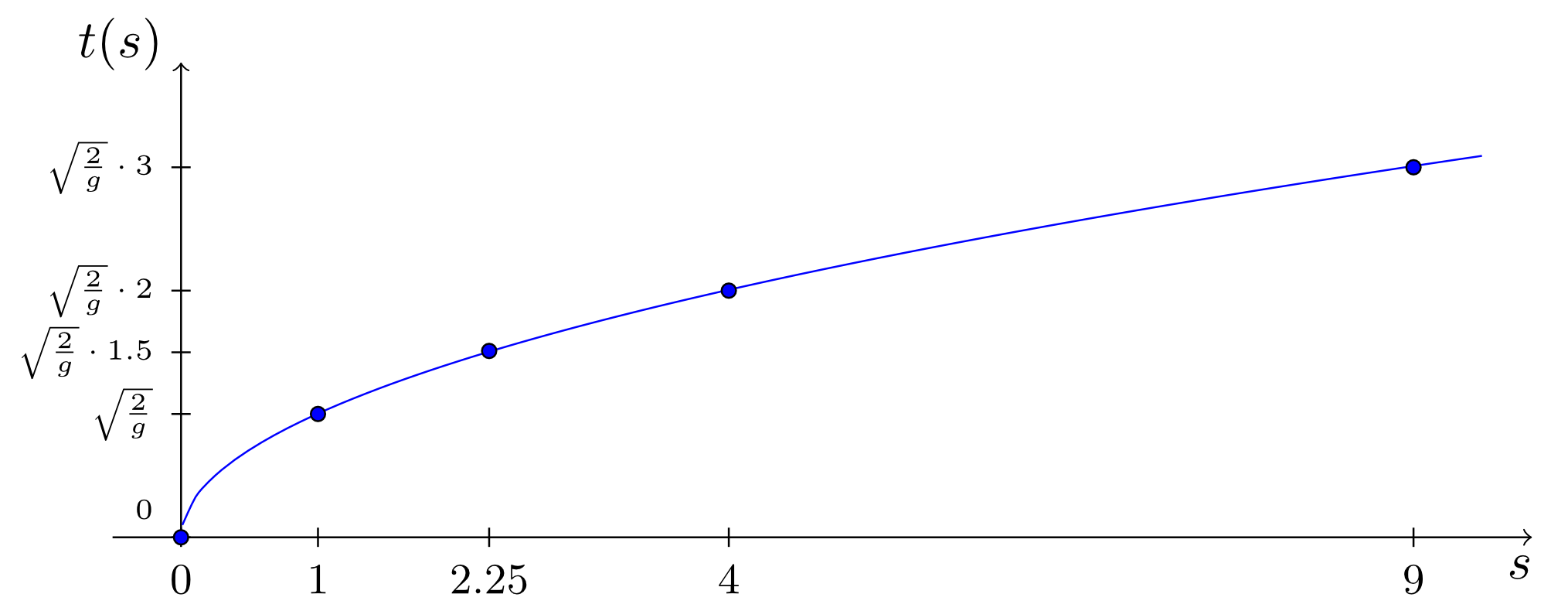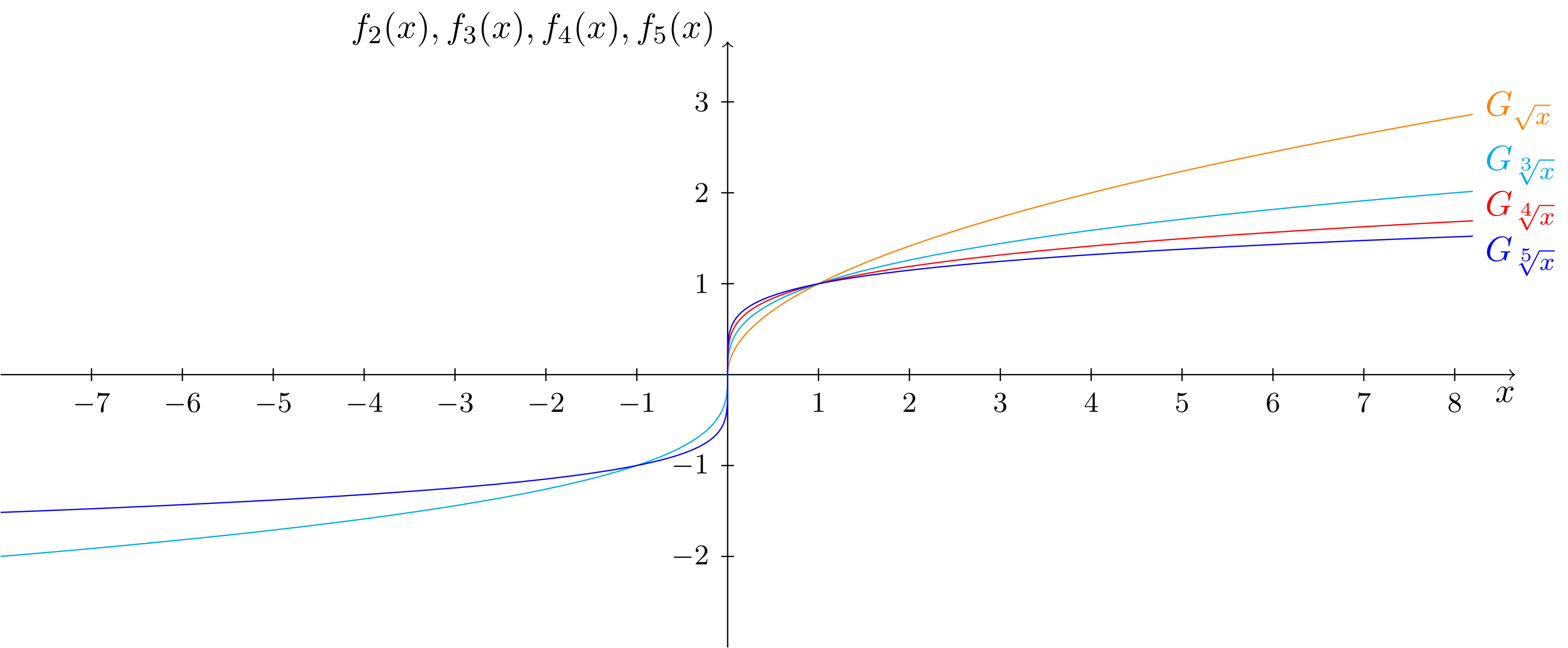Chapter 6 Elementary Functions
Section 6.3 Power Functions6.3.2 Radical Functions
Example 6.3.1
If an object falling in the homogeneous gravitational field of the Earth is observed, then the following relation between the falling time and the travelled distance can be found:
| Falling time in seconds | |||||
| Travelled distance in metres |
Here, is the physical constant of the gravitational acceleration. Now, plotting these values in a diagram with the horizontal axis and the vertical axis results in the figure below.

This suggests that the relation between and can be described mathematically by the function
with being the independent variable. This is a function, in whose mapping rule a root (more specifically, a square root) of the independent variable occurs. Then, the graph of this function contains the measurement points listed above:

This example shows that functions with mapping rules that contain roots of the independent variables occur naturally in applications of mathematics.
For natural numbers , , the functions
are called radical functions. Obviously, these include the square root , the cube root , the fourth root , etc., as mapping rules of functions (see exponent rules).
Exercise 6.3.2
Transform the mapping rule of the radical functions using exponent rules such that only exponents still occur in the mapping rule.
Exercise 6.3.3
What is the function with ?
Of great relevance is now the maximum domain that a radical function can have. Obviously, it depends on the exponent of the root which values of are allowed to be inserted in the mapping rule to obtain real values as a result. So we see that the square root has a real value as a result only for a non-negative number. However, if we consider the cube root , then we see that the cube root has a real value as a result for all real numbers, for example, . Generally, we have:
Info 6.3.4
The radical functions
with and have the maximum domain if is even and the maximum domain if is odd.
Thus, the graphs of the first four radical functions, , , , , look like as in the figure below.

From the graphs, it can be seen that all radical functions are strictly increasing.
Exercise 6.3.5
For the radical functions
with , , find the range depending on whether is even or odd.
with , , find the range depending on whether is even or odd.
 Onlinebrückenkurs Mathematik
Onlinebrückenkurs Mathematik